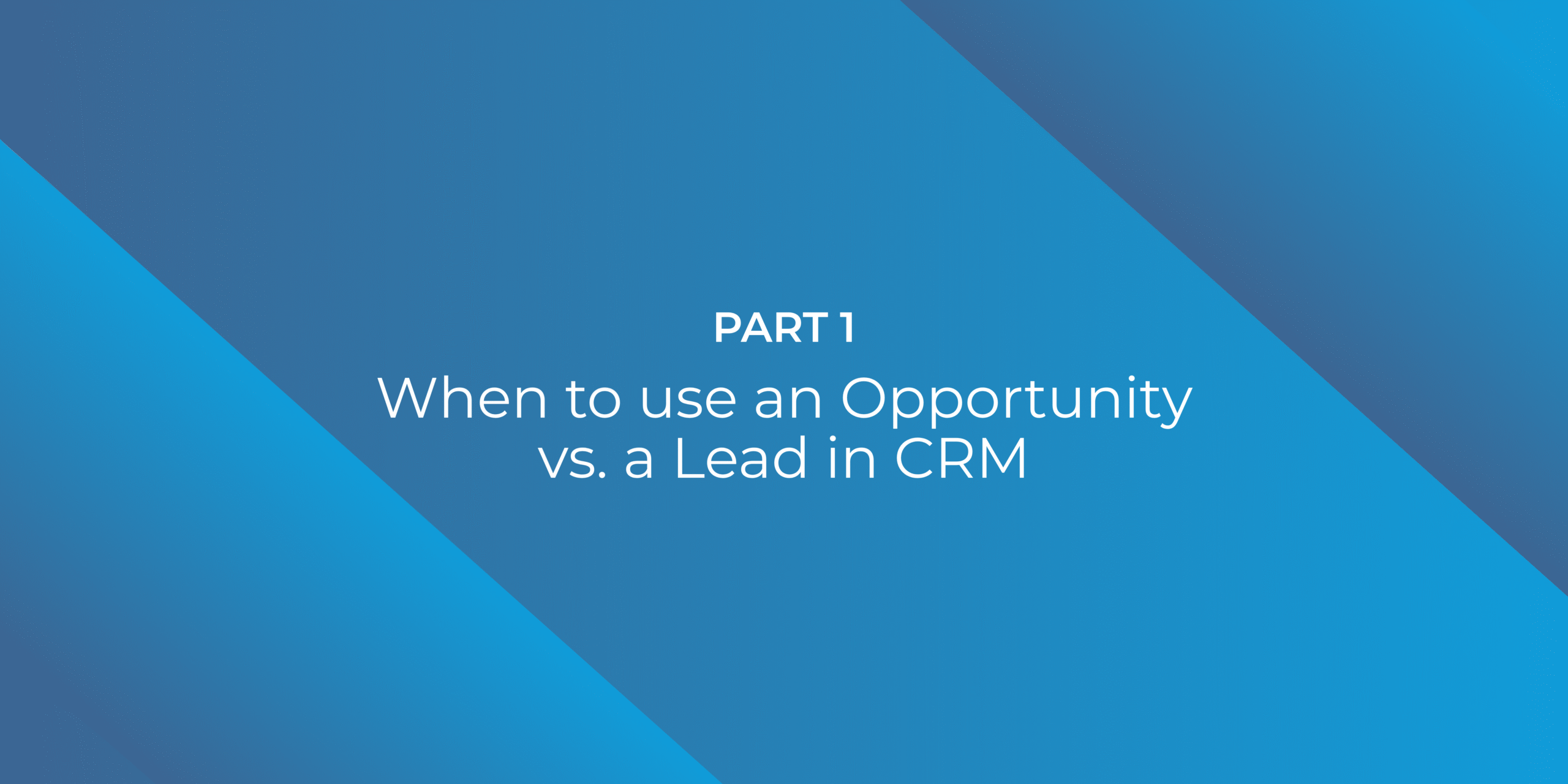Customer Relationship Management tools, or CRMs have two different philosophies regarding leads vs. opportunities. All CRMs generally agree that a lead is someone who has the potential for becoming a customer, but too little is known about that contact to determine if and how sales should get involved. Often, marketing takes the initiative to generate and develop leads until they show real promise, such as meeting a minimum lead score or showing a specific level of interest. Likewise, all CRMs agree that opportunities arise when there’s a real possibility for a sales transaction.
Differing Philosophies
However, depending on the CRM platform, philosophies differ in how leads and opportunities relate. This difference is highly correlated with whether the CRM is account-centric or contact-centric. In account-centric CRMs like Microsoft Dynamics 365 for Sales and Zoho CRM, leads are a separate and distinct record type from accounts, contacts, and opportunities. They have their own “space,” so the other record types aren’t cluttered with suspects and prospects that may never buy.
However, in a contact-centric CRM like HubSpot, a lead is just a different lifecycle stage for a contact. When that contact shows the potential to buy, the lifecycle stage can be changed to Sales Qualified Lead or Opportunity. Leads and opportunities are on the same relationship continuum for a given contact. There is no separate “space” for leads, marketing-qualified leads, sales-qualified leads, and opportunities. Regardless of their lifecycle stage, all contacts are in the same record type (i.e., Contacts).
Whether you are a HubSpot Sales Hub user, a Microsoft Dynamics 365 for Sales user, or a user of another platform altogether, you should have clear processes defined for who is a lead, who is a marketing qualified lead, who is a sales qualified lead, and who is an opportunity. As noted above, in Microsoft D365, leads and marketing qualified leads are probably in the Lead record type, whereas Sales Qualified Leads and Opportunities are in the Opportunity record type. Deciding when and how to qualify or convert a lead can be a grey area unless you have some clear processes in place that outline how they are to be handled.
Examples
Here are some examples I’ve come across that can help demonstrate this point.
Email Campaigns
When we run an email campaign, we may decide that if an email is simply opened, we don’t want a sales team member to pursue that lead yet. Instead, we want marketing to continue to nurture that lead. However, if an email is clicked, additional information is explored, and a form is potentially completed, a sales team member needs to get involved to further explore the prospect’s level of interest. The hand-off is clear.
Email opened -> Marketing owns and nurtures
Email clicked and/or form filled out -> Sales takes over and explores further
Tradeshows
Another example is a tradeshow. In my experience tradeshows have a lot of “tire kickers”, but you can also find interested prospects there. Based on your interaction with the folks who visit your booth, you can decide if marketing should continue nurturing them or if sales should get involved immediately.
Tradeshow “tire kickers” -> Marketing owns and nurtures
Buying intent expressed -> Sales takes over and explores potential
Referrals
A final example is with referrals. When a friend or a colleague puts their own reputation on the line to make a referral, it substantially increases your chances of winning the deal. So, with referrals it may make sense to get a salesperson involved right away. However, as I have found, not all referrals are ready to buy. Some are just shopping yet have a budget. Some are completely unsure of what they want. So, what might at first seem like a great opportunity may be reclassified as a lead. The sales team member may want to give this prospect back to the marketing team for further nurturing.
If buying potential isn’t clear -> prospect is transitioned to marketing for nurturing
Referrals -> Sales follows up and explores potential
It's a good idea to take various scenarios like this and determine who does what and when. Just like in a relay race, make sure the hand-offs between marketing and sales are solid! No dropping the baton!
If you want some guidance on how to effectively use leads and opportunities, please reach out to TopLine Results. Call 1-800-880-1960 or email info@toplineresults.com. And if you want to go deeper and improve how your sales and marketing teams can work better together, check out this book for tips on growing your topline while reducing your expenses – all by improving your go-to-market alignment.

